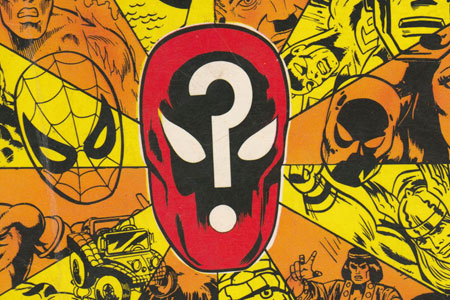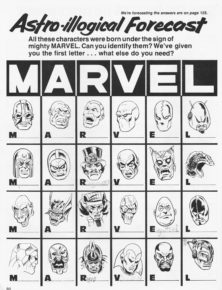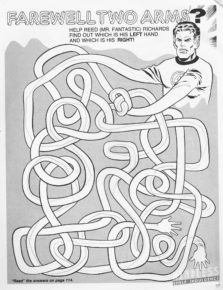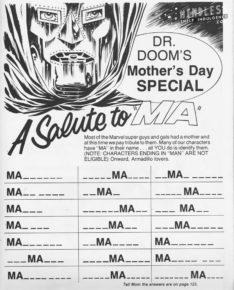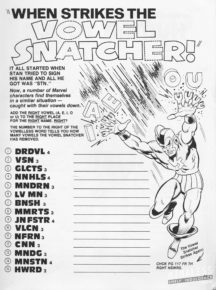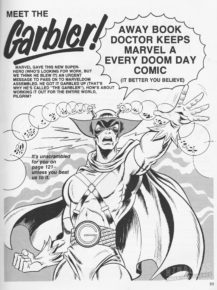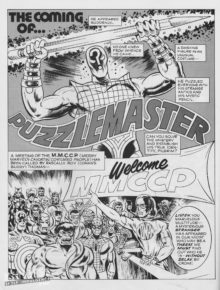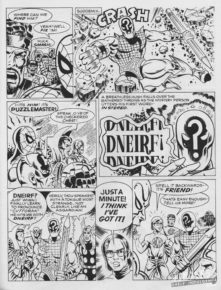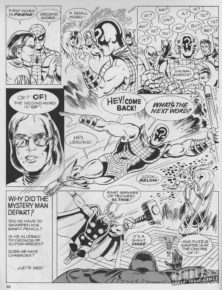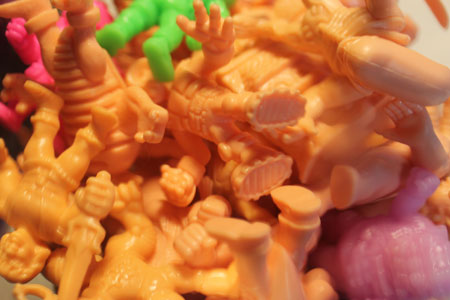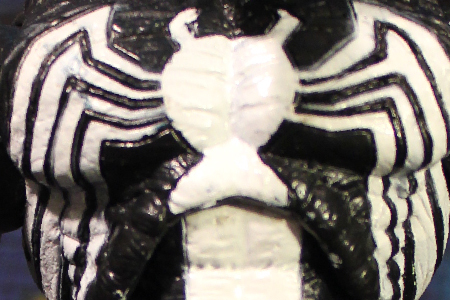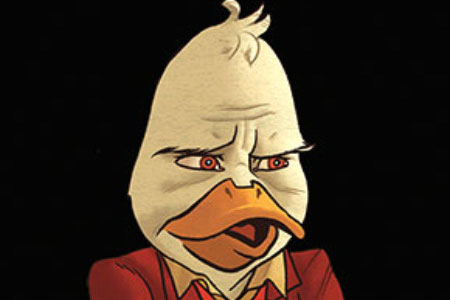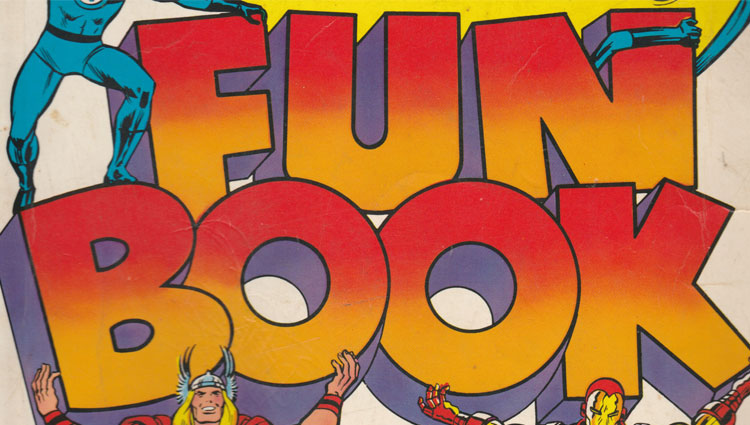
The year was 1976, and Marvel comics were probably at their weirdest and most wonderful. Howard the Duck got his first solo book after first appearing in 1973’s Adventure into Fear #19. The Eternals made their first appearance, as did Nova, Psylocke and Star-Lord. And the Marvel Fun Book actually expected kids and comic collectors to know who Black Lama was. And if you don’t know who he was, look it up. It’s truly insane, and proof that by 1976, comic books had gone completely off the rails in the best possible way.
The Marvel Fun Book was just one of the many ways that Marvel was making comic book tie-in stuff in the late ’70s and early ’80s. As far as toys went, there was pretty much only Mego figures, and maybe a few static Marx resin figures, so collectors really didn’t have a whole lot to choose from. Except for, you know, comics.
Around this time, Marvel was also playing around with the Value Stamp idea, which would require the collector to purchase and then cut up specific comics to collect a ‘stamp’ to put in an album. Not to be overly precious about comics and collectibles that were used as they were intended, but snipped-out value stamps are one of the most singularly destructive things that ever happened to Marvel Comics. And that includes that terrible 1991 ‘swimsuit’ issue, which had a whole fake narrative about all of Marvel’s hunkiest heroes taking a tropical vacation and getting nearly-nude for a Tony Stark charity event to benefit the environment, with Peter Parker taking some of the questionable photos. Gross.
That Marvel stamp collecting concept was made even more expensive with the Official Marvel Comics Super hero Stamp Album, which required the collector to both buy a collectors’ book, and multiple packs of stamps to fill the pages with. Truly, Marvel knew how to squeeze collectors for every last gimmicky dime. But at least the Marvel Fun Book wasn’t predicated on collecting or destroying your collectibles; it was a real, honest-to-Stan activity book with some genuinely challenging Marvel-themed puzzles, many of which require a pretty deep knowledge of Marvel trivia.
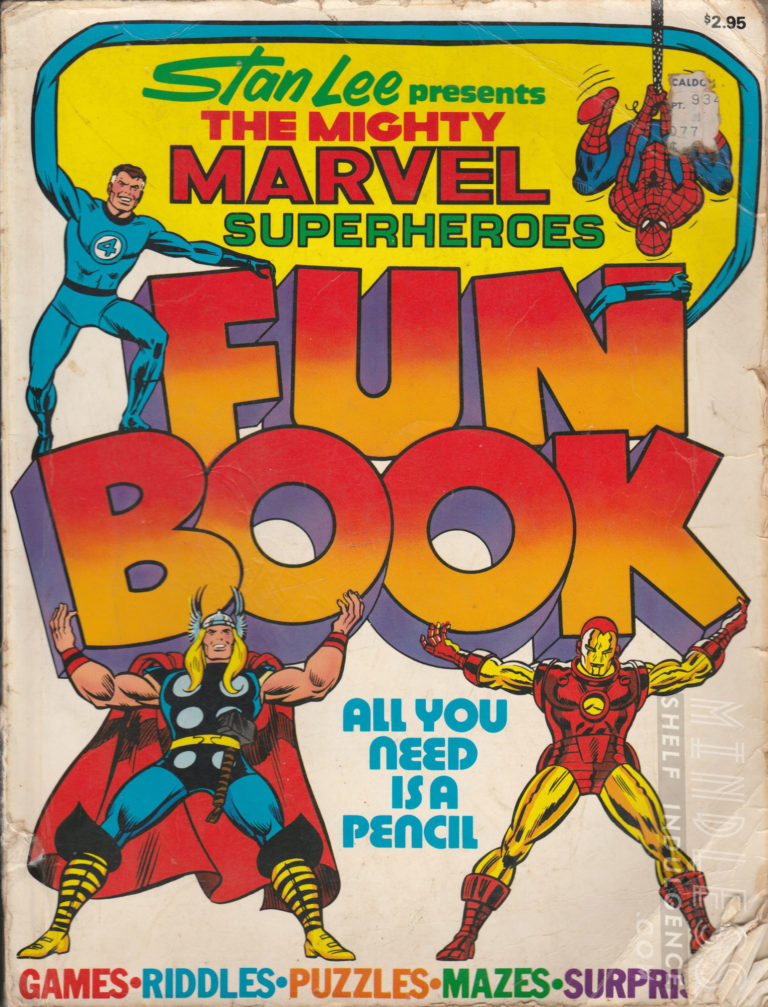
Puzzles include everything from mazes to word searches, peppered with some pretty esoteric trivia about bizarre heroes and villains along the way, and a whole lot of ’70s Marvel sass.
Among the more unusual villains were characters like The Garbler and the Vowel Snatcher, who don’t exist anywhere in Marvel Comics except this Fun Book. Which, honestly, is a pretty good thing… but with later characters like Typeface and Spellcheck (not kidding), these guys were way ahead of their time. Granted, their only known power set is to f–k up coloring books, but they’re still better than Stilt Man.
But one villain appears far more often than the others in the pages of the Fun Book (including on the back cover), and as you read through this mess, you realize that he’s a pretty serious antagonist. Or at least some kind of Watcher-like character who only exists to exist. It all starts when he appears on page 36, challenging the reader to align a whole bunch of sound effects into a grid. Enter: Puzzlemaster.
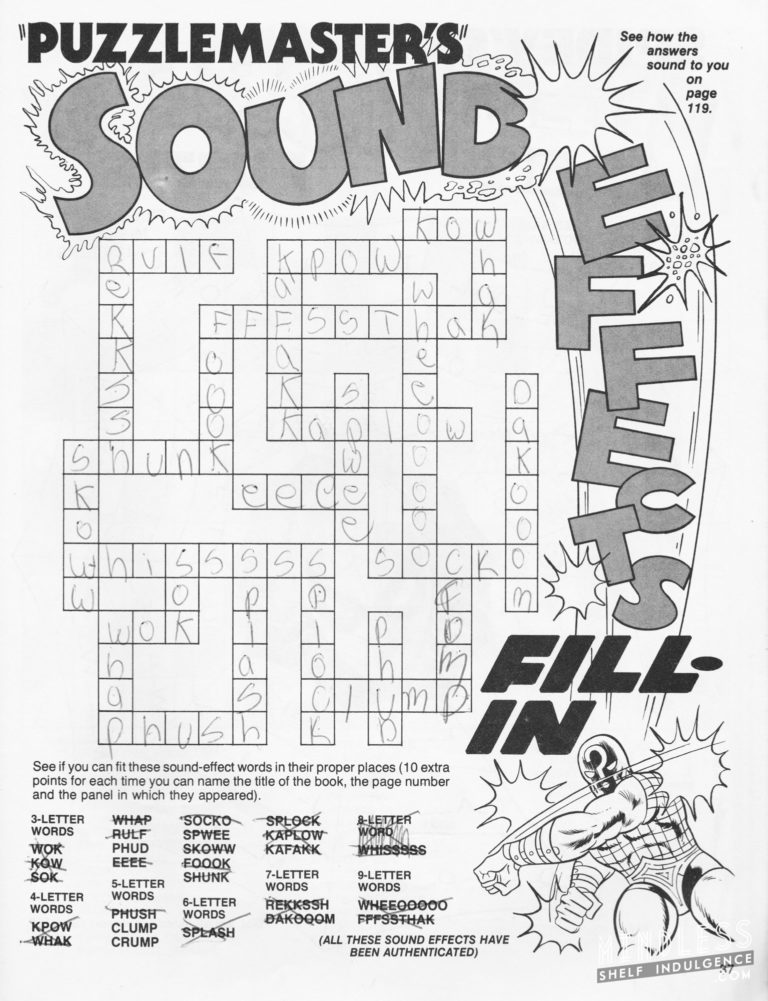
By page 48, it’s clear that he’s not just a one-time villain. Puzzlemaster is here to challenge you, and all of Marvel’s heroes with word-based chicanery. But is his intent evil…. or just fun?
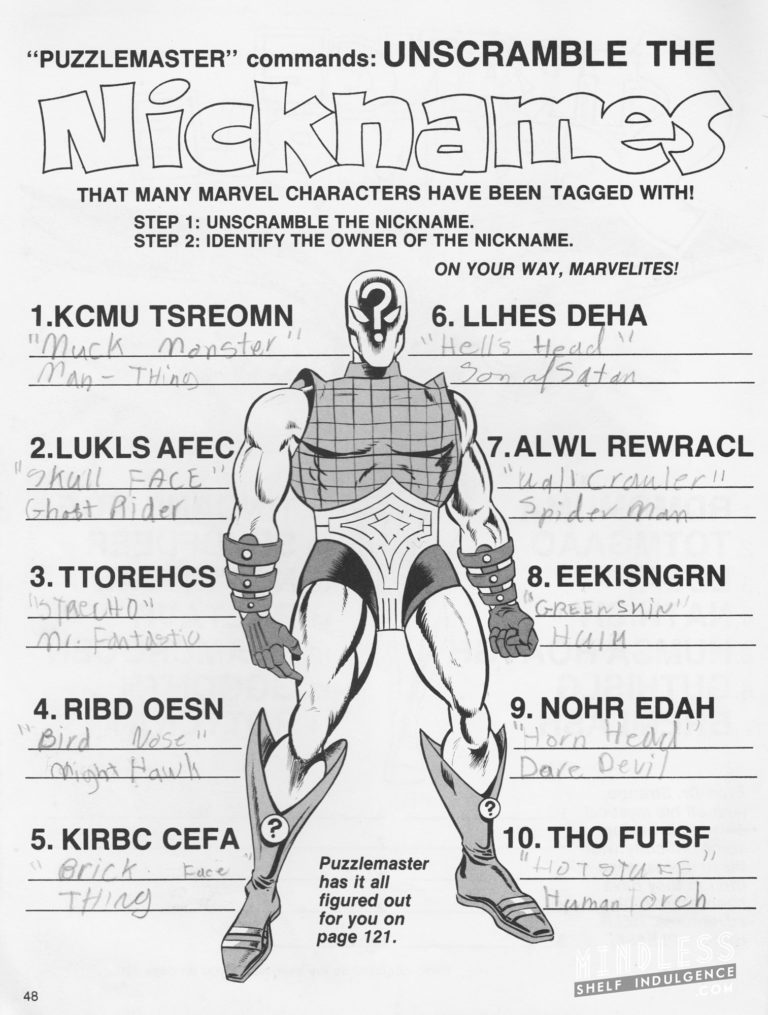
Puzzlemaster has crossword puzzle boobs, a maze belt, and he’s swinging some kind of crazy cosmic pencil. And believe it or not, he might be one of Marvel’s most important characters.
He appears over and over until page 94, creating conundrum after conundrum. It’s at this point the entire activity book just becomes a comic, with everyone trying to figure out just who the heck this guy is before it’s too late… with the help of Marvel EIC Roy Thomas.
Roy Thomas had succeeded Stan Lee in 1972 to be Marvel’s EIC, and Lee took the title of publisher. Thomas had created characters like Man-Thing, Luke Cage, Iron Fist, Carol Danvers, Grandmaster, and even Morbius. But by 1980, Thomas would leave Marvel for DC after a contract dispute with Editor Jim Shooter. Thomas’ presence in this activity book demonstrates that he was, at least for a time, a figurehead for Marvel – enough that this guy would appear in a book designed for kids, alongside Lee’s frequent appearances.
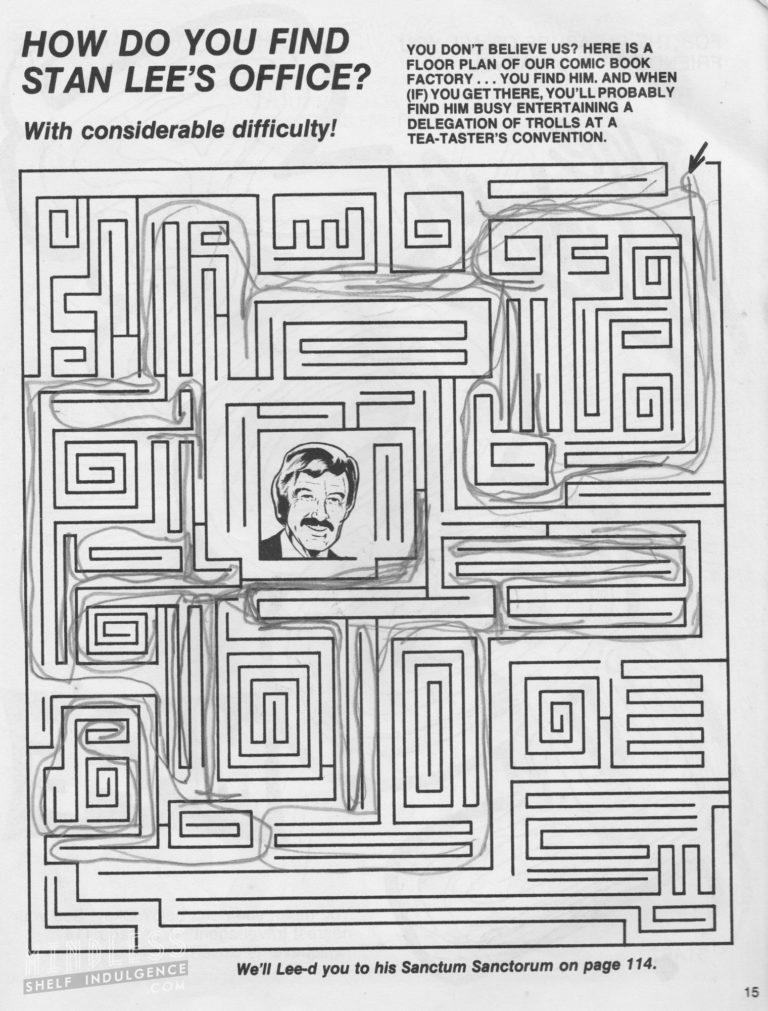
But Lee was always the king. His name was on the cover of countless comics, and the Fun Book as well. For all intents and purposes, Lee has always been just as much of a character in Marvel comics as Spider-Man. An entire maze is dedicated just to the theme of getting into The Man’s office. And as you can see, our young friend from 1976 failed miserably at this task.
But not nearly as miserably as he failed at drawing The Thing.
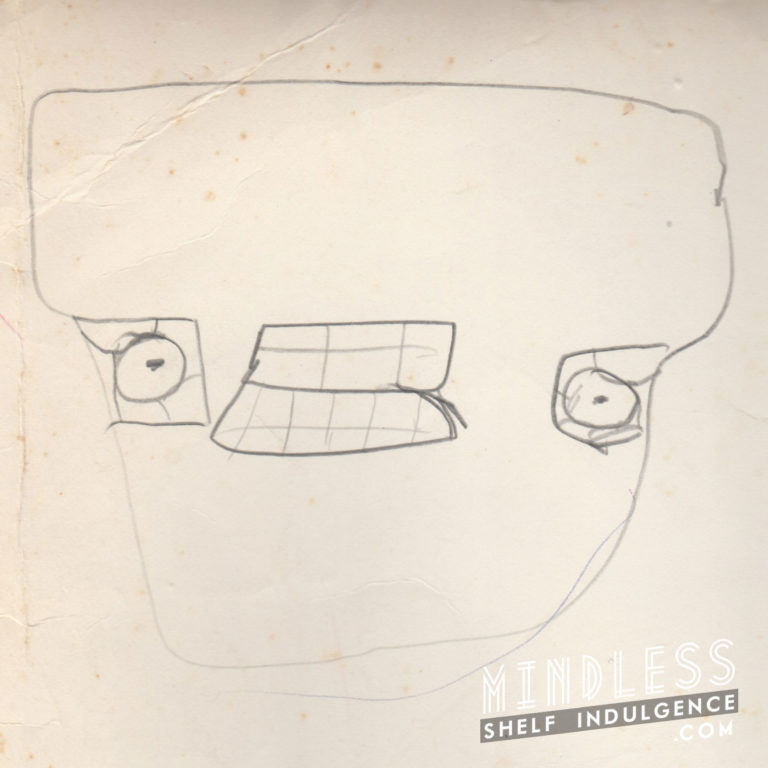
Nah, this kid seems cool. So, with nothing better to do, Marvel’s assembled heroes get together and solve a few puzzles, and eventually, they figure out in the dumbest possible way that Puzzlemaster is actually…
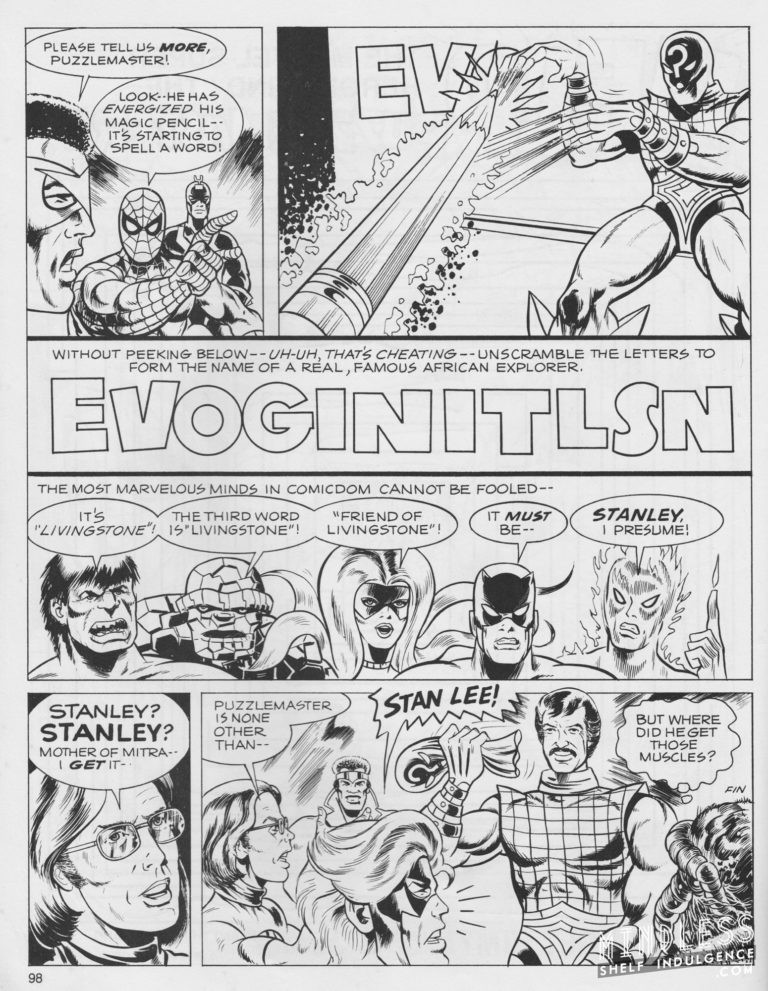
It’s a cacophony of nonsense on a dozen levels, not unlike some comics of the era. The book implores the reader to not peek a half-inch down the page, where they reveal the answer three times in unavoidable, rapid succession. It calls David Livingstone an “African explorer”, which just can’t be right; he was a Scottish person who explored Africa. And the clues feel so hastily written that any satisfaction from solving this big mystery is all but yanked away from your grasp. But the idea that Puzzlemaster is Stan Lee’s superhero persona?
That’s awesome.
Stan never appeared again as the Puzzlemaster, and this was just one of his many, many cameos across comics and movies, but I’d argue that this is his best. Except, maybe, his cameo as a friend of the MCU’s Watchers.
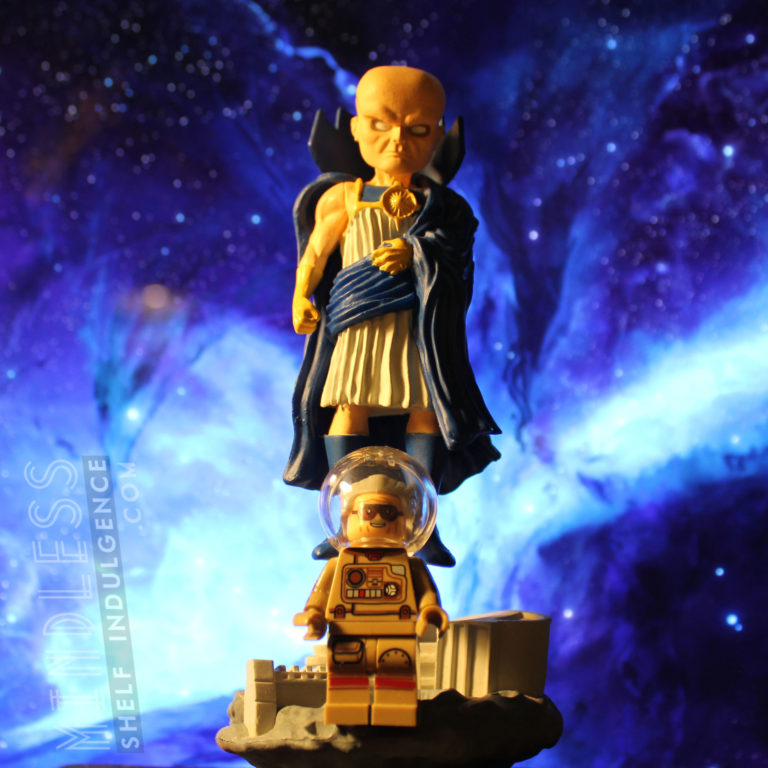
Can anything beat Jack Kirby’s cameo as God in Fantastic Four #511, though? Probably not.
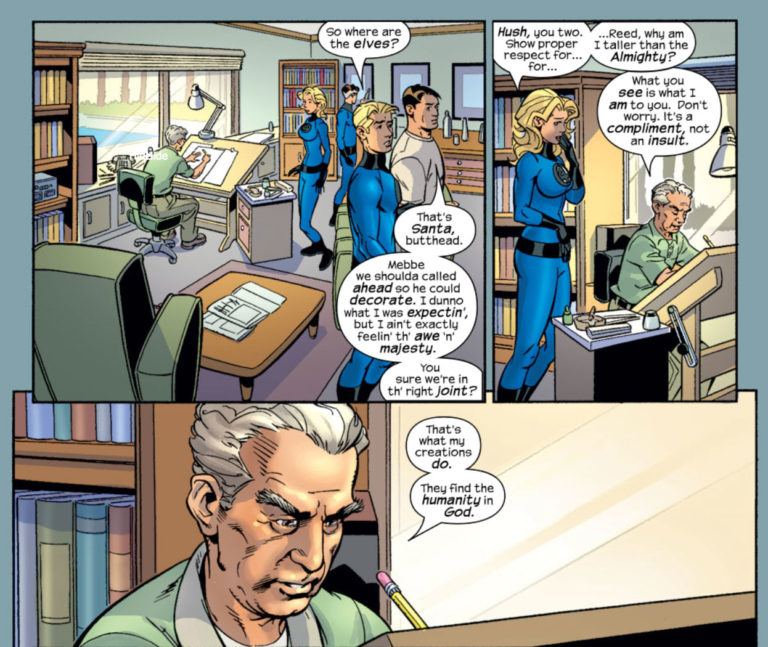
 C. David is a writer and artist living in the Hudson Valley, NY. He loves pinball, Wazmo Nariz, Rem Lezar, MODOK, pogs, Ultra Monsters, 80s horror, and is secretly very enthusiastic about everything else not listed here.
C. David is a writer and artist living in the Hudson Valley, NY. He loves pinball, Wazmo Nariz, Rem Lezar, MODOK, pogs, Ultra Monsters, 80s horror, and is secretly very enthusiastic about everything else not listed here.
